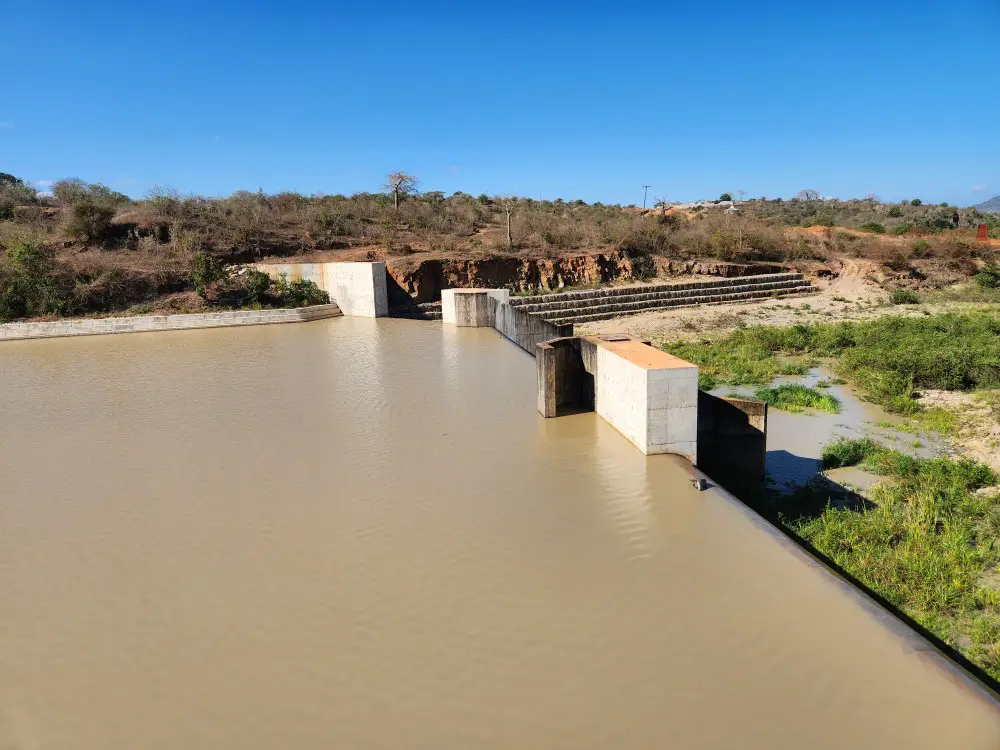After approximately five years of rehabilitation and reconstruction, Pemba Dam in Kinango sub-county, Kwale, Kenya, has begun operations. The rehabilitated dam was launched by Alice Wahome, the Cabinet Secretary (CS) for Water, Sanitation, and Irrigation.
“The completion of Pemba Dam is a game changer for the residents of Kinango,” said the CS. She added that the residents were facing perennial water shortages. This she explained is because of water rationing from the Coast Water Services Board.
The rehabilitation of the Pemba Dam in Kinango
First built in the 1980s, the dam’s 4-meter-high spillway was damaged by the rains caused by the El Niño weather phenomenon. This made it impossible for the dam to discharge the floodwaters “to a discharge arm or ditch.
Also Read: Sh45 million Shauri Moyo multipurpose dam launched in Kwale, Kenya
In the late 2010s, the government embarked on a project to rehabilitate the dam’s weir and spillway. The project also comprised the installation of a new raw water intake and raw water pumping station. In addition, it involved the construction of a new 3,000m3/day conventional water treatment plant and connection to the existing Marere line.
The project for the rehabilitation and reconstruction of the Pemba Dam in Kinango was carried out by Zhonghao Overseas Construction Engineering Co. Ltd. The Chinese company was awarded a contract to carry out the project by Athi Water Works Development Agency in 2018.
The Kenyan company Coast Water Works Development Agency (CWWDA) was also a part of the project team.
Government to build over 100 dams across the country in a bid to improve water supply to Kenyans
The CS for Water, Sanitation, and Irrigation said that the national government would construct over 100 dams across the East African country. In addition, she said it will oversee the completion of abandoned water projects.
Ms. Wahome said that the water projects will go a long way in increasing access to water and sanitation and improving the health and livelihood of Kenyans, especially rural populations.

